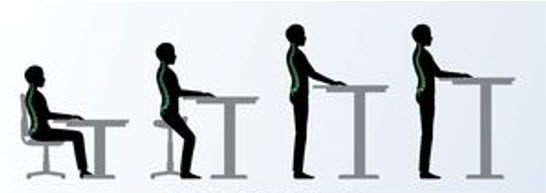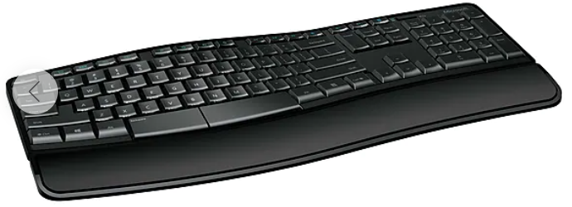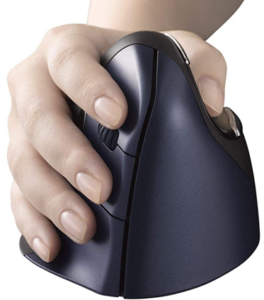Ergonomics Matter
Employing organizations must provide safe workspaces for their team members. Notably, this requirement is indisputable under workers’ compensation laws. Yet, according to the United States Bureau of Labor Statistics, one-third of all ergonomics
injuries originate in the workplace. In this article, you will learn why ergonomics
matter and the actions you can take to create an ergonomically-friendly
workplace.

Defining Ergonomics
According to Webster, ergonomics is “the study of efficiency in working environments,” a rather broad definition, to be sure. Importantly, from a business perspective, ergonomics means adapting tasks to fit team members instead of adapting team members to fit tasks. Of course, this distinction accounts for human differences in size, stature, and disposition.
Unfortunately, when employers and team members fail to address ergonomics, the consequences can range from minor to severe. To illustrate, examples of common ergonomically-driven conditions include:
- Headaches,
- Back pain,
- Pain in the fingers,
- Carpel Tunnel Syndrome,
- Tendonitis, and
- Rotator cuff injuries.
Of course, these conditions can lead to decreased productivity, time away from work, surgery, and in some cases, lawsuits for damages.
Addressing Ergonomics
Notably, according to the United States Department of Labor, the following elements are critical to reducing workplace-related ergonomic issues.
- Provide Management Support. A company’s management team must commit to a sound ergonomic program. They can do this by establishing clear goals and objectives, assigning responsibilities, and communicating with team members.
- Involve Workers. Team members can help identify and provide information about potential ergonomic hazards. Of course, they also should offer their concerns and suggestions about potential risks and solutions.
- Train Team Members. Training team members on the “right” way to do their job is critical to the success of any ergonomics plan. After all, if we don’t train team members on a process, how can we expect them to follow it?
- Identify Problems. Management and team members should work together to identify potential ergonomics issues. Ideally, this proactive effort should occur before workplace injuries occur.
- Encourage Early Reporting. Importantly, the ergonomics plan should encourage team members to report issues early instead of waiting until they become more severe. Of course, early reporting can reduce the severity of the injury and allow for task re-design to prevent future problems.
- Implement Solutions To Control Hazards. Management and team members should work together to identify and implement solutions to control ergonomic risk. Notably, these solutions could involve re-designing a task or workflow, utilizing new equipment, or a combination of the two.
- Evaluate Progress. Management and team members should view any ergonomic review as a process, not a project. This characteristic means it is ongoing and does not have an end date. Continual feedback and improvement are necessities for success.
Ergonomics And Remote Work
Importantly, the requirement for employers to provide a safe working environment does not end when team members leave the office building. Instead, this requirement generally extends to remote work locations, including team members working from home. Therefore, employers should be aware that their obligation to provide a safe working environment follows team members to job sites, wherever those job sites may be.
Likely, many team members who have recently begun working from home have not addressed the issue of ergonomics in their home offices. Instead, they may work from their kitchen table, a spare bedroom, or even a sofa in their living room. As a result, their home office probably lacks many of the characteristics of an ergonomically-sound workspace. In turn, productivity likely suffers, and work-related injuries could arise.
Three Specific Examples
Regardless of the work location, management and team members should address the following three specific ergonomic issues.
- Appropriate seating,
- The potential of using a sit/stand desk, and
- Ergonomically-friendly keyboards and mice.
Appropriate Seating
Unfortunately, one of the more common issues affecting team members is sore backs resulting from sitting much of the day at their desks. Notably, in many cases, poorly-designed chairs contribute to this condition, particularly those not adjustable and without lumbar support. However, you can quickly remedy this condition by acquiring appropriate adjustable seating for yourself and your team members. For example, arguably made famous by the Herman Miller Company, seats with adjustable heights, armrests, and lumbar support are a virtual necessity in any environment seeking to address ergonomics.
The Potential Of Using A Sit/Stand Desk
Likewise, closely related to appropriate seating is the issue of what type of desk you should use. Increasingly, many are turning to height-adjustable, sit/stand desks to address ergonomics. With a sit/stand desk, you can choose to work in a sitting position for a while. Then, you can raise the desk and work from a standing position. Many workers find that they remain energized by alternating between sitting and standing throughout the day. Further, by introducing variability into their work position, they place less pressure on their backs and feet.
Ergonomically-Friendly Keyboards And Mice
For some, using a keyboard and mouse for extended periods can create pain in their hands and wrists. Unfortunately, in extreme cases, the pain can be debilitating and even require surgery. However, there are specific actions team members can take to reduce the risk. Among others, these actions include using ergonomically-sound keyboards and mice.
For example, Microsoft’s Sculpt keyboard shown in Figure 1 offers a slightly curved design to place workers’ hands in a more “natural” position. Therefore, the nerves in the wrist may be relieved of pressure, and team members potentially avoid surgery.

Similarly, Evoluent’s vertical mouse – shown in Figure 2 – may also address and relieve wrist pain. Notably, this mouse places the user’s wrist in a more natural position, one that potentially helps reduce pain.

Summary
Ergonomics matter and well-designed working environments benefit organizations and team members alike. When we account for ergonomics, we improve team member productivity and morale. Simultaneously, we reduce workforce injuries and workers’ compensation claims. Therefore, consider the options you have to improve ergonomics in your work environment – including remote work environments. Further, think about how technologies such as curved keyboards and vertical mice may help you create a more ergonomically-friendly environment. Your back, feet, and wrists thank you in advance.
Interested in applying technology to your work environment? Learn more by participating in a K2 Enterprises learning session.
